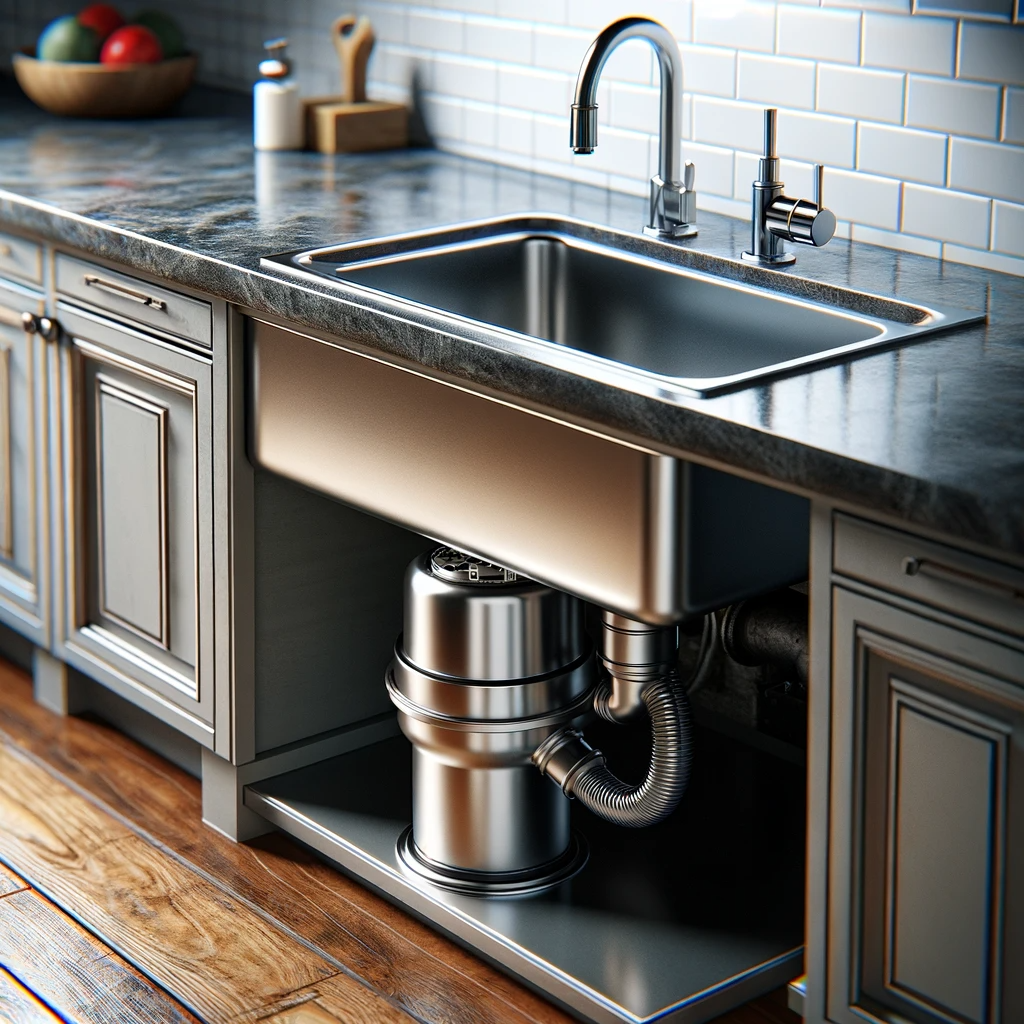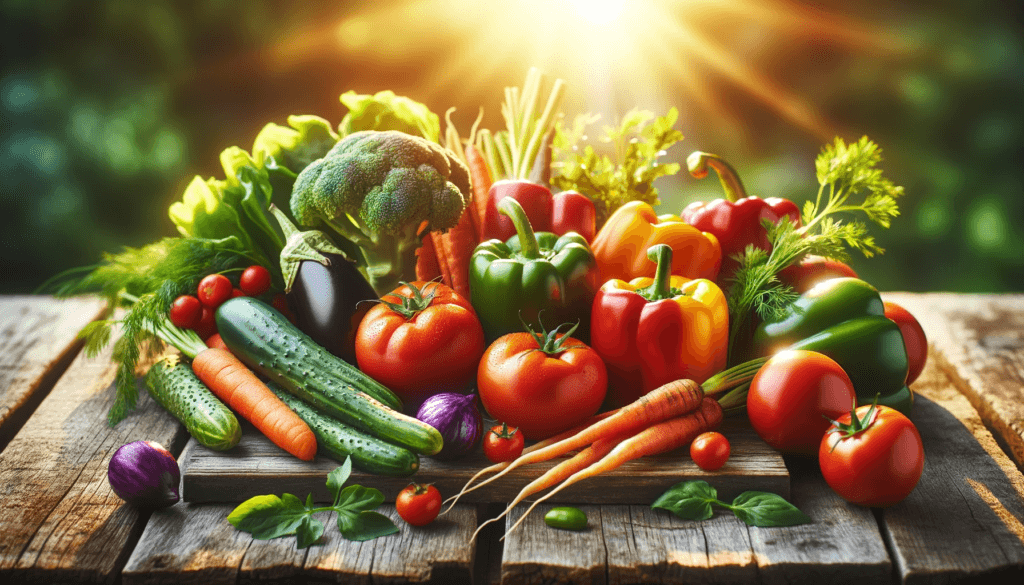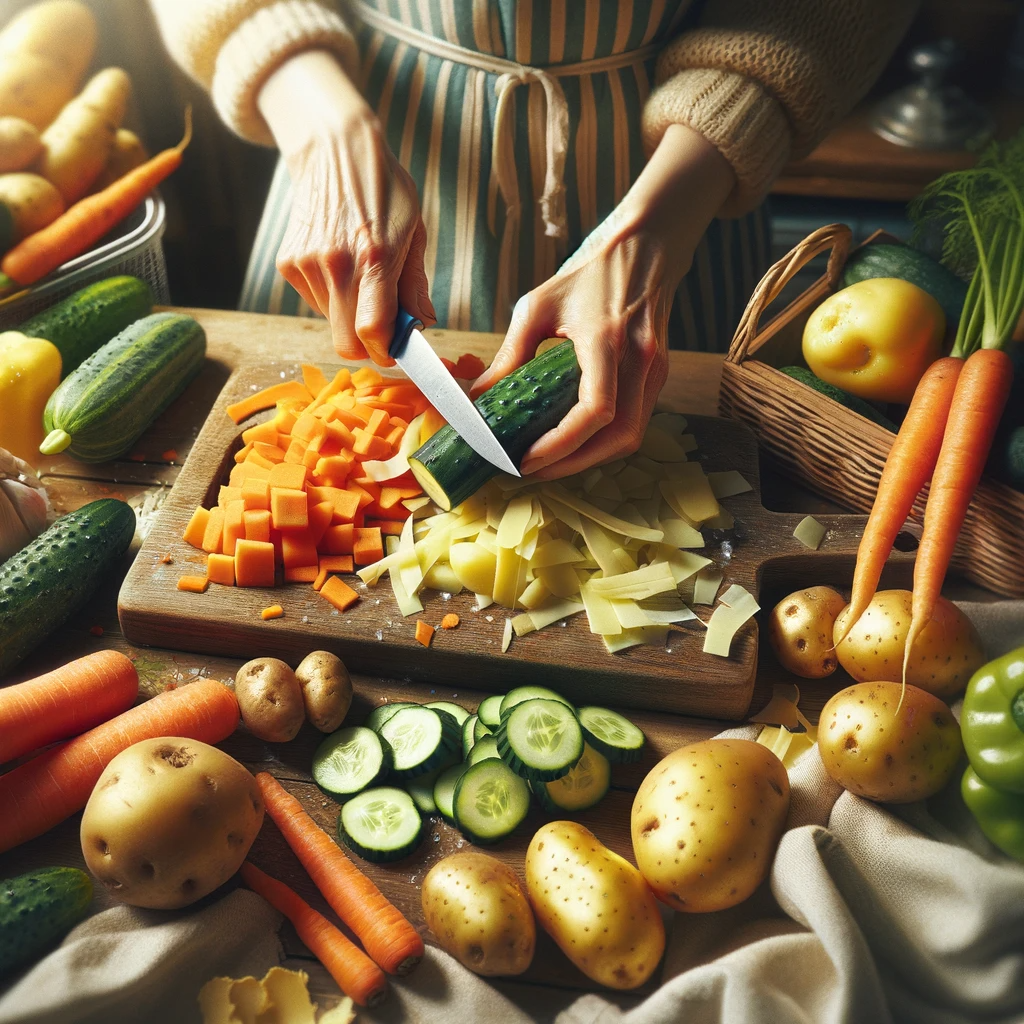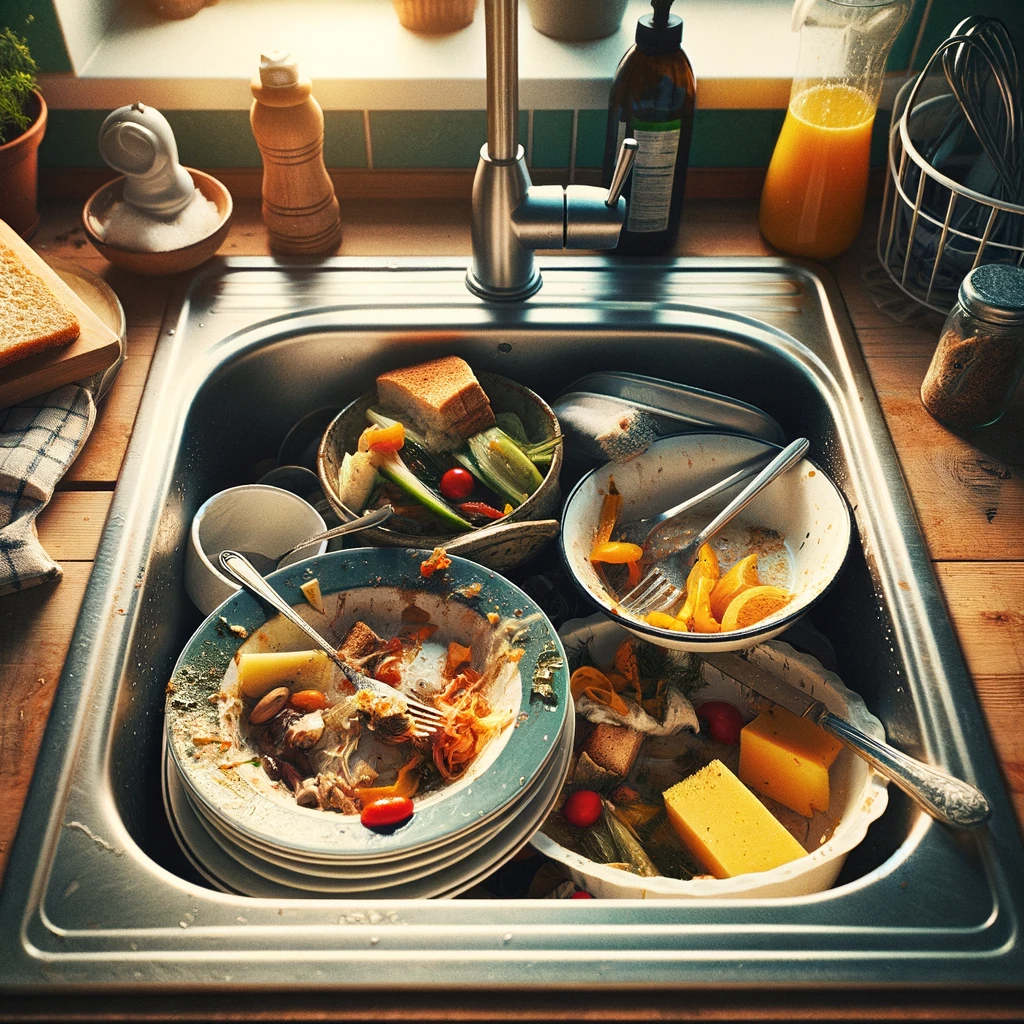Today I came across an article about all the things you are not supposed to put down the garbage disposal, which left me speechless. The headline was something along the lines of ’10 things you should never put down the garbage disposal or you’ll regret it’. The article relied heavily on ‘the plumber says this’ and ‘the plumber warns of that’… But more than the plumber the two authors of that article kept on saying: you can put this in the compost or throw it in the garbage can.

I have used a garbage disposal for the last 30 years and yes, there are some things you are not supposed to put in as they can clog your disposal as food goes, like onion peels and potato peels as well as coffee grounds. But you can still combine those with other foods, and they go down just fine.
The one thing you should not pour down is grease or oil, unless according to my plumber that installed the garbage disposal, you first put dishwashing liquid in the pan to neutralize the oil or grease. And yes, it works quite well that way. Other people will tell you never flush it down and others will tell you only flush it down when it is hot. Now I am not talking about oil or grease you use for frying foods – that definitely does not belong down the garbage disposal. Frying oil belongs in a container and taken to the Waste Management company for disposal. I am talking about a pan that has some butter or oil to cook vegetables or chicken, or some kind of food that needs some oil or grease to taste better and does not burn in the pan.
Getting back to the article, they did not want you to put ‘any’ food down the garbage disposal, no food left over from the plate, no pieces left over from cleaning vegetables, no meat pieces from trimming, no eggshells, basically nothing. They wanted you to put everything in a compost or throw it in the trash can. This sounds ok when I have a garden with a compost that I can use to distribute between vegetable beds and flower beds.

But in the city? In an apartment? Really? There is no compost I can put my scraps into, and I most definitely do not put my scraps in the trash can if I have a garbage disposal. So that headline was really misleading. Yes, it made me open it out of curiosity, but nope, I am not ‘regretting’ putting my food scraps down my garbage disposal. And nope, it does not ruin my garbage disposal. I had to change the disposal only once after 15 years, as the seals were finally giving out, so I bought a new and stronger one, and still an InSinkErator, as we have a great experience with that.

Yes, there is still some basic maintenance that needs to be done, like cleaning it thoroughly, which I do weekly and 2x a month I use a product called ‘Glisten DP20B Disposer Care Foaming Garbage Disposer Cleaner’. I also use either lemon or orange peel to freshen the disposal or, if I do not have any, I use the Plink Garbage Disposal Pearls. Especially as I am cleaning 6 cat dishes 3 times a day and there are some small amounts of leftover food that will go down the disposal. So, in order to avoid smells I at the end of the day I put one of those pearls down and it keeps the disposal smelling fresh.
Now just to mention the things you do not put down your garbage disposal, and those instructions do come with your disposal booklet, here they are:
- Do not put the following into a disposer: clam or oyster shells, caustic drain
cleaners or similar products, glass, china, or plastic, metal (such as bottle
caps, steel shot, tin cans, or utensils), hot grease or other hot liquids. – Well, that should be a given, I think. Who wants to pick out broken glass or China pieces from a disposal? I certainly don’t. Metal – well not intentionally, but my husband sometimes lets the spoon he scoops out the cat food slide into the disposal and when he turns it on – oh boy, yes, we do have a few ruined spoons, but I just use them for the cat food, so it works out ok. - Do not dispose of the following in the disposer: paints, solvents, household
cleaners and chemicals, automotive fluids, plastic wrap. – That should also be clear I think, none of this has any place in the disposal – they need to be taken to the Waste Management station to be disposed of correctly. One thing I want to add here – do not under any circumstances put plaster down the disposal/drain – that will guarantee you a costly visit from a plumber. It might be liquid when you put it down, but trust me, it will turn to concrete once it is down there. So be smart and drain the water slowly without getting any particles into the sink, then either leave it in the container to dry and dispose of it in the trash or pour it out into a container – be it plastic bag or box – to dispose of it once dried.
DON’T… - DON’T POUR GREASE OR FAT DOWN YOUR DISPOSER OR
ANY DRAIN. IT CAN BUILD UP IN PIPES AND CAUSE DRAIN
BLOCKAGES. PUT GREASE IN A JAR OR CAN AND DISPOSE
IN THE TRASH. – That’s what I was referring above. Just keep a container handy that you fill with oil or grease and then take it to the Waste Management be disposed of correctly. - Don’t use hot water when grinding food waste. It is OK to drain hot water into
the disposer between grinding periods. According to the article they did not want you to put any hot water down the disposal – not sure how I would get rid of my pasta water then. As it says, you can drain hot water, but as soon as you turn on the disposal use cold water. Afterward you can clean the sink with soap and hot water again. - Don’t fill disposer with a lot of vegetable peels all at once. Instead, turn the
water and disposer on first and then feed the peels in gradually. This makes a lot of sense. If you do not have the water, the disposal will grind to a halt. I turn on the disposal first and then slowly feed my vegetable scraps into it. And not just vegetable scraps – I do that with all my food. If you have water running, the disposer will run much smoother, and it takes less time to get rid of the scraps. - Don’t grind large amounts of egg shells or fibrous materials like corn husks,
artichokes, etc., to avoid possible drain blockage. Even you can put fibrous vegetable scraps down there are certain ones I do not put in the disposal – the above-mentioned corn husks and artichokes are amongst them, as well as onion and garlic skins – they tend to get stuck in the disposal quite easily – it won’t stop the disposal, but they kind of stick to the walls. So, unless I have a lot of other vegetable scraps, I try to throw those in the trash can.
Now just a few DO’s:
- Grind hard materials such as small bones, fruit pits, and ice. A scouring action
is created by the particles inside the grind chamber. – Now I know my garbage disposal does grind small bones, but I usually make a soup out of chicken bones, and they are quite soft by the time I have finished cooking them. Fruit pits I never tried, and I probably won’t – with the exception of apple cores with the soft seeds. Ice, yes, especially when I clean out my ice maker in the fridge then the old ice goes down the disposal – and no, it will not hurt it either. - Grind peelings from citrus fruits to freshen up drain smells. If I have any, yes, I certainly do that, especially in fall and winter when we eat more citrus fruits.
- Use a disposer cleaner, degreaser, or deodorizer as necessary to relieve
objectionable odors caused by grease build-up. That I do regularly, and it keeps the disposal nice and fresh.

So, there is one last food in the article they throw in the trash can and I will never do that with the exception of meat bones which I wrap up but then take the trash out immediately, otherwise your kitchen starts smelling really unpleasantly. Meat scraps do not go into my trash can either, but down the disposal.
So, getting back to the article, I use my garbage disposal the way it is intended to, and that article headline just scares people for no reason. But I know it won’t be the last article that will do that, as it makes for lots of clicks, which is their intention.
